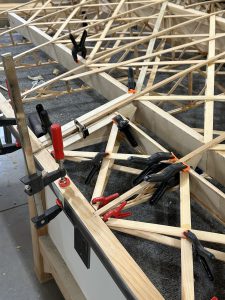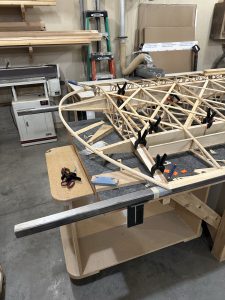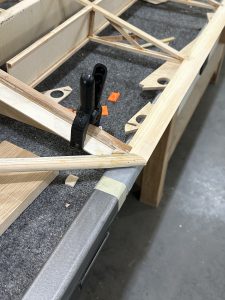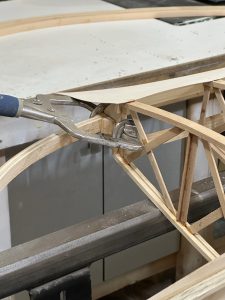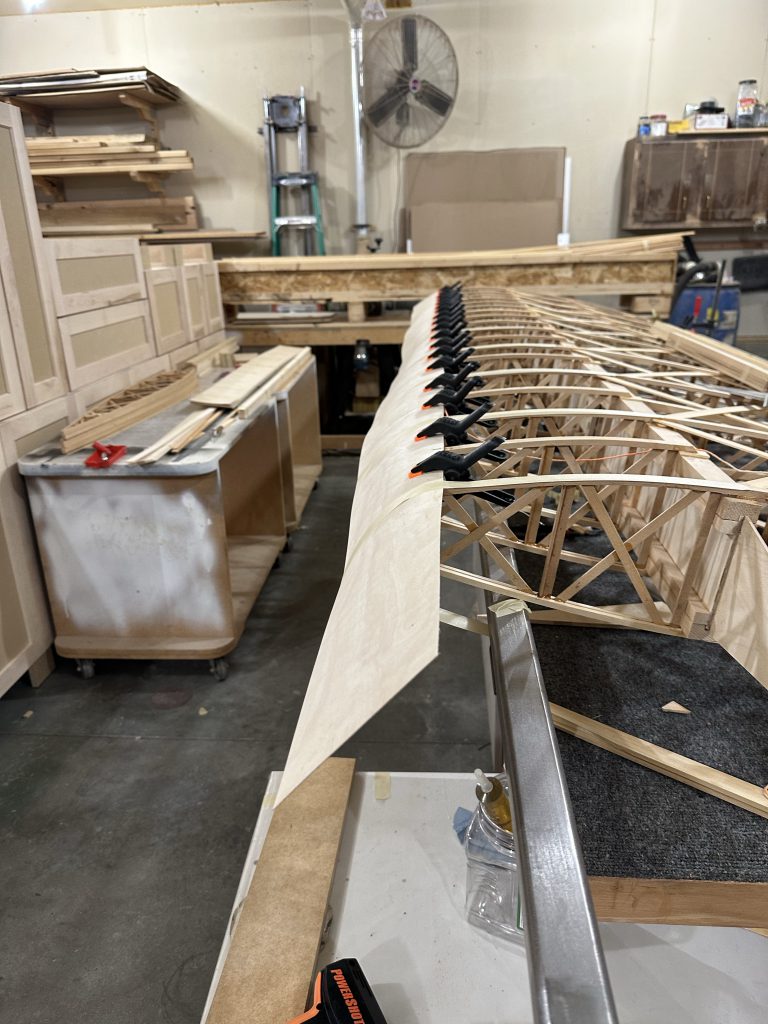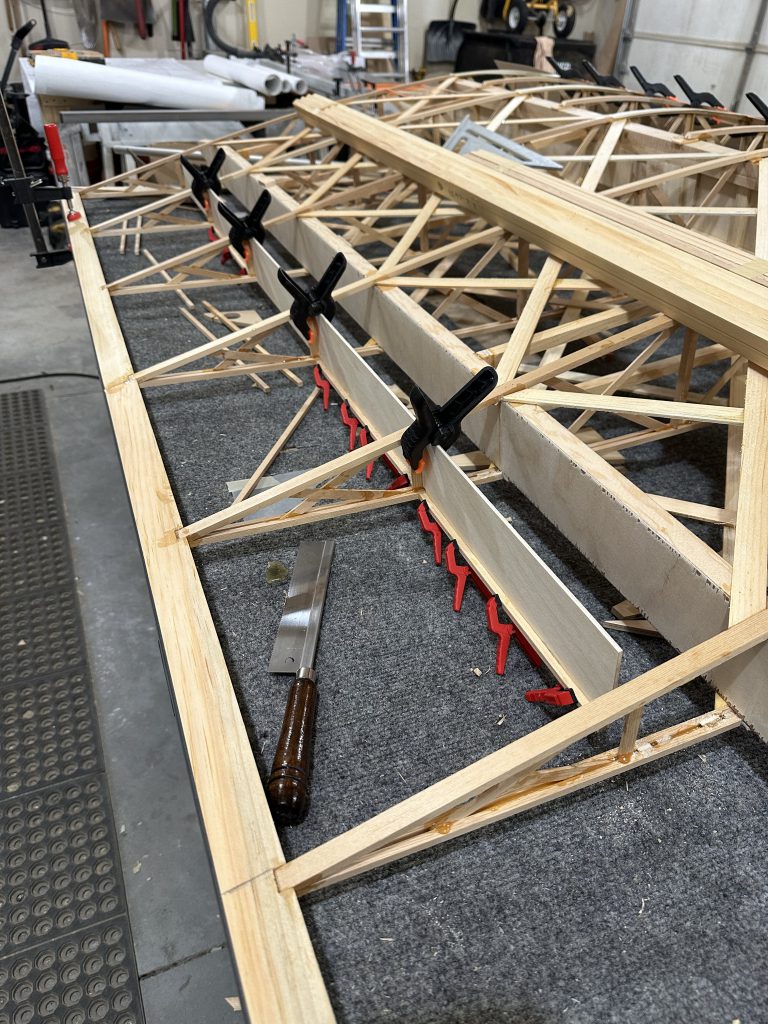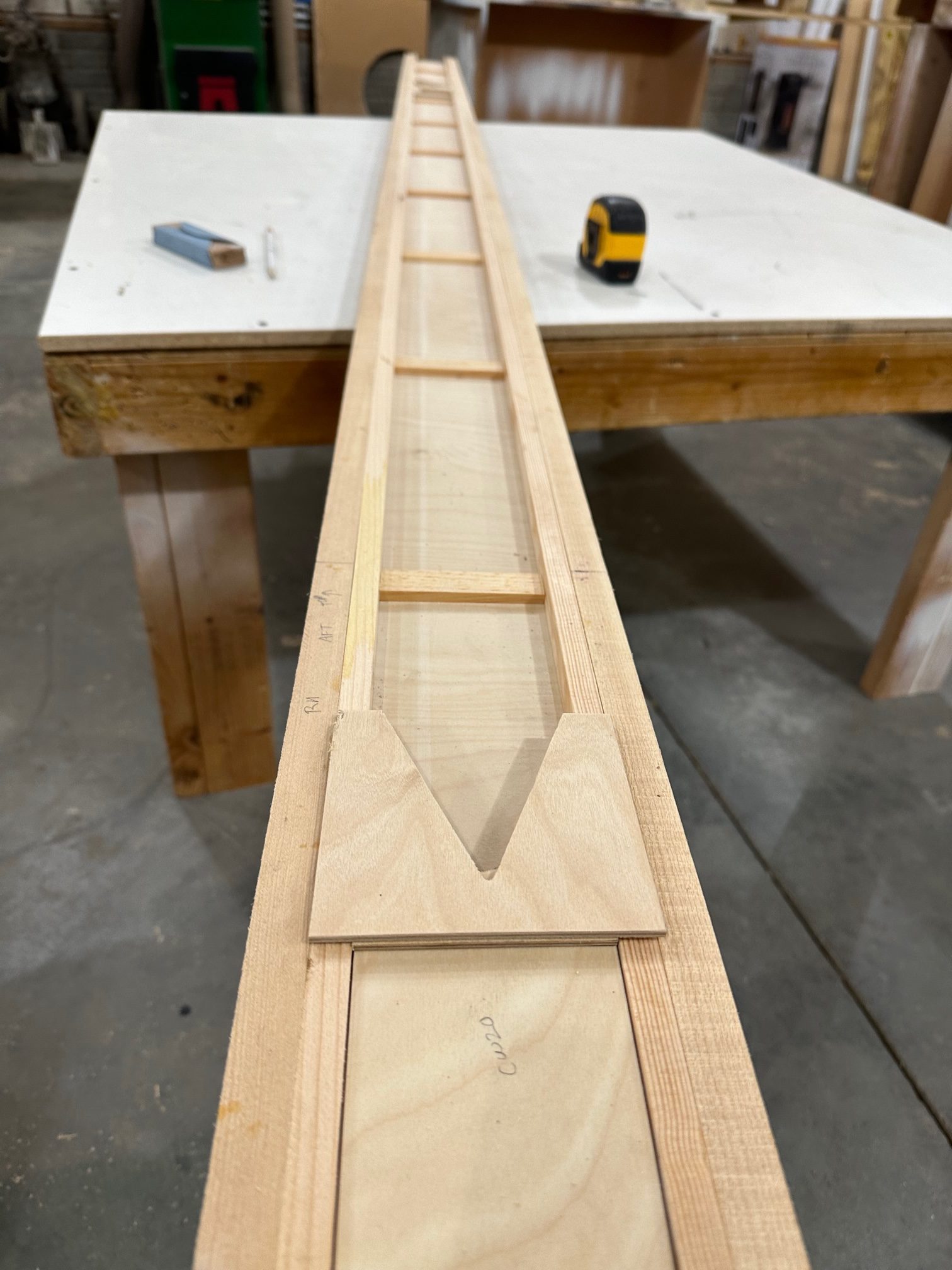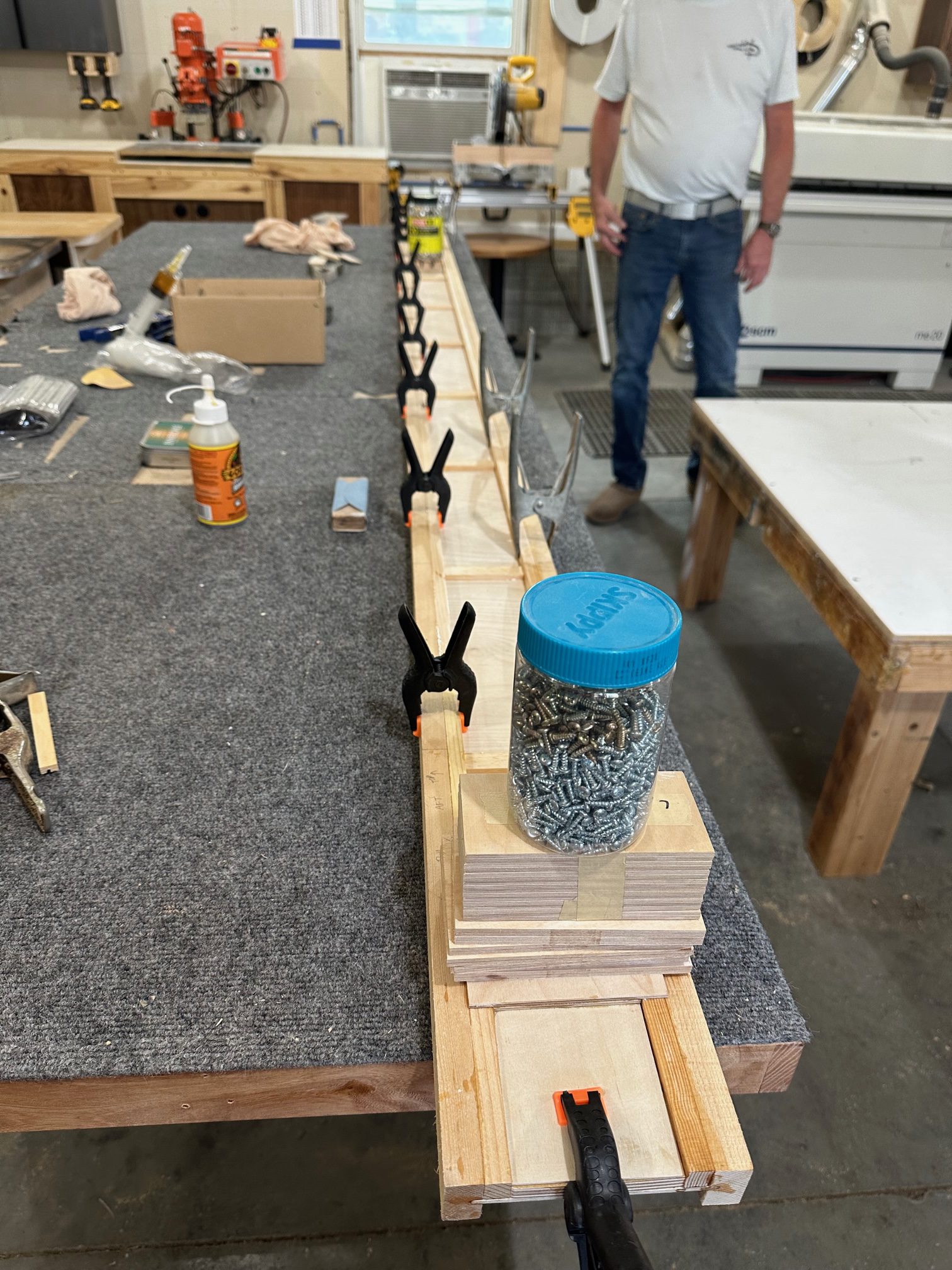It’s been a bit since my last update here. In the past couple of weeks we took a nice cruise vacation, and I developed a pretty severe case of bronchitis. It’s possible these two things are not unrelated; one of the risks you take to get a little Caribbean sun and salt air in the middle of winter, I guess!
I’ve been working to get the leading edge of the aileron wrapped with plywood. Honestly, at this point I can understand how someone would make the decision to scrap an aileron and start from scratch. I don’t think I’ll go quite that far, but there have been challenges. I’m adding to my “lessons learned” for the next three ailerons, that’s for sure. Part of it is just developing a process to get the ply to wrap over the pretty sharply curved top surface. This part I solved with a couple pieces of Styrofoam and some dumbbells, to effectively clamp the aileron to the bench with the ply trapped underneath. That should hopefully take care of the upper portion. The bottom edge of the top piece of ply isn’t yet glued to the structure, so I’ll have to figure that out today.
I’m really looking forward to building the next wing. I’ve learned so much while building this one that I’m pretty sure the next will take a lot less time, although I’ll have to figure out the wing walk on the next one. I talked to a guy building an RS-80 Tiger Moth the other day. He told me about improvements he’s made to his wing walk to avoid seeing the wing deflect when someone steps onto it. I’m not sure how much I’ll be able to do on mine, but he’s using carbon fiber in a substantial number of places on his build. Honestly, the wing walk is one area where I was thinking I would need to beef things up a little anyway… if you’ve met me you’ll understand why.
But, of course the devil is in the details. Every time I think I’m almost finished with this wing I am reminded of all the detail work that has yet to be done. I need to cut and install all of the bushings for the bolts; finish cutting, shaping, and drilling the various aluminum mounting brackets; cut and finish the scallops in the leading edge plywood; figure out and build the transition from leading edge to wingtip bow (most likely foam)… there’s a lot of stuff left to do, but fortunately it’s really only a few days’ work.




